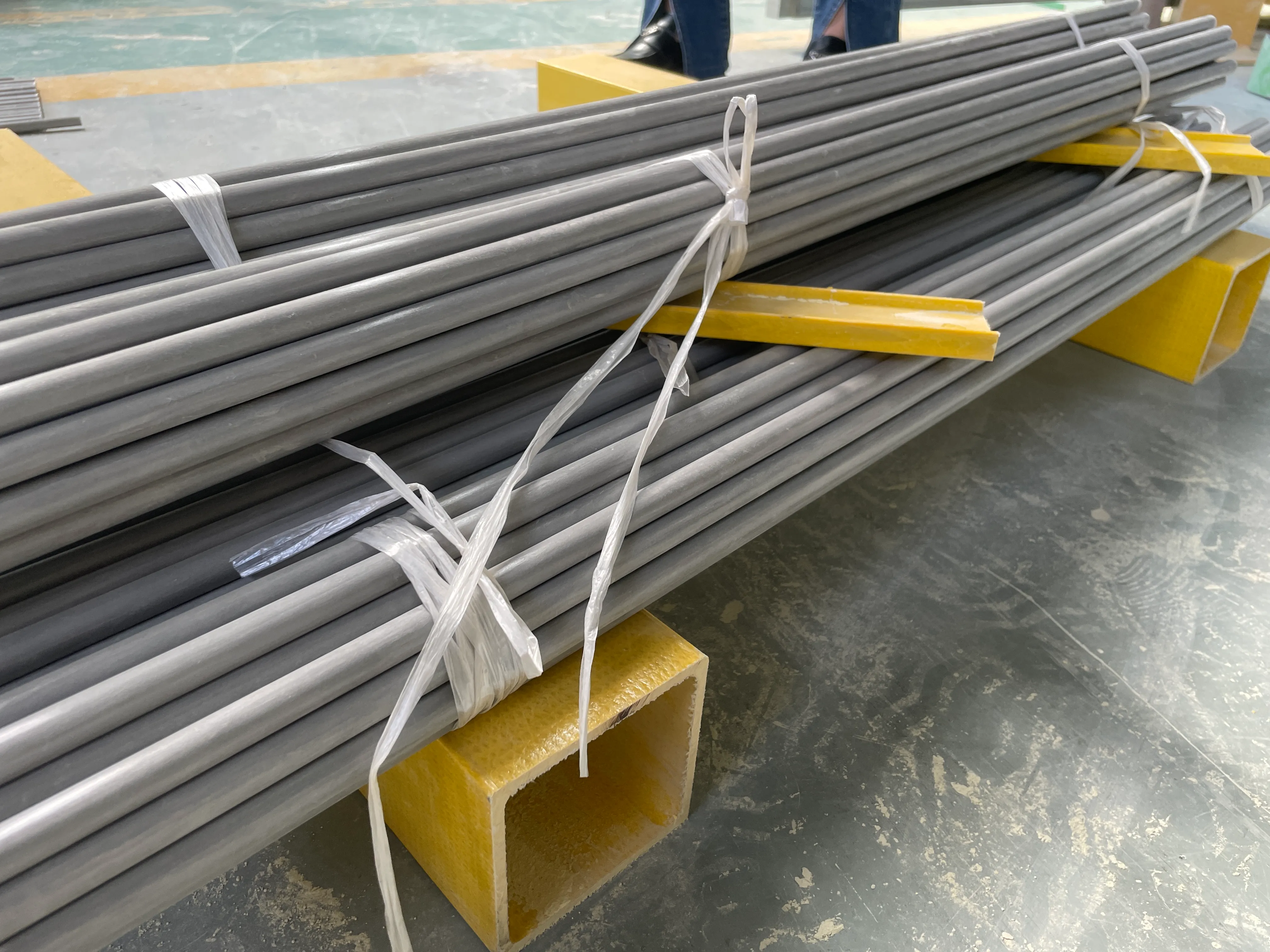loading...
- No. 9, Xingyuan South Street, Dongwaihuan Road, Zaoqiang County, Hengshui, Hebei, China
- admin@zjcomposites.com
- +86 15097380338
- Welcome to visit our website!
frp rod
The Emergence and Significance of FRP Rods in Modern Engineering
Fiber Reinforced Polymer (FRP) rods have gained significant attention in the field of modern engineering and construction. Their unique properties and advantages make them an attractive alternative to traditional materials such as steel and concrete. This article delves into the characteristics of FRP rods, their applications, benefits, and potential challenges, providing a comprehensive overview of their role in contemporary engineering projects.
Understanding FRP Rods
FRP rods are composite materials made from a polymer matrix reinforced with fibers. The fibers commonly used can be glass, carbon, or aramid, each contributing distinct properties to the resulting composite. The polymer matrix provides the structural integrity, while the fibers enhance strength and stiffness. This combination allows FRP rods to possess excellent tensile strength, corrosion resistance, and a lightweight structure, which are critical factors in many engineering applications.
Applications in Civil Engineering
One of the primary applications of FRP rods is in civil engineering, particularly for reinforcing concrete structures. Traditional steel reinforcement bars (rebar) are susceptible to corrosion, especially in environments exposed to moisture and de-icing salts. In contrast, FRP rods are inherently resistant to corrosion, which significantly prolongs the lifespan of structures. This makes them ideal for use in marine environments, bridges, and buildings where durability is paramount.
Additionally, FRP rods are employed in prestressed and post-tensioned concrete applications. Their lightweight nature facilitates easier handling and installation compared to steel rods, which can lead to reduced labor costs and improved efficiencies on site. Furthermore, their high tensile strength allows for the design of slender and efficient structures, enabling architects and engineers to create innovative designs that were previously challenging to realize with conventional materials.
Advantages of Using FRP Rods
1. Corrosion Resistance As mentioned, one of the key benefits of FRP rods is their resistance to corrosion. This attribute not only increases the longevity of structures but also reduces maintenance costs over time.
2. Lightweight The lightweight nature of FRP rods offers significant advantages in construction. Easy transport and handling can lead to lowered labor costs and expedited construction timelines.
frp rod

3. High Strength-to-Weight Ratio FRP rods provide excellent strength-to-weight ratios, making them suitable for applications that require high performance with reduced weight. This is particularly beneficial in aerospace, automotive, and sporting equipment industries.
4. Design Flexibility The versatility of FRP rods allows for the creation of various shapes and styles, accommodating innovative engineering designs. This adaptability opens new possibilities in architectural creativity.
5. Thermal Expansion Compatibility FRP rods exhibit lower thermal expansion coefficients compared to steel, which is advantageous in minimizing cracking and thermal stress in concrete structures subjected to temperature changes.
Challenges and Considerations
Despite their numerous advantages, several challenges accompany the adoption of FRP rods. One of the primary concerns is the relatively higher initial cost compared to traditional materials. Although the lifecycle cost may be lower due to reduced maintenance and increased longevity, the upfront capital expenditure can be a deterrent for some projects.
Moreover, the bond between FRP rods and concrete needs careful consideration. Researchers and engineers continue to study methods to enhance this bond to ensure that the load transfer and overall structural performance meet safety standards.
Lastly, standardization and acceptance within the engineering community are ongoing challenges. Regulatory frameworks governing the use of FRP materials in construction are still evolving, necessitating further research and collaboration among industry players.
Conclusion
FRP rods are undeniably at the forefront of modern engineering, offering a multitude of benefits ranging from corrosion resistance to design flexibility. Their applications in civil engineering exemplify their potential to revolutionize construction practices and improve the durability of infrastructure. While challenges remain, continuous advancements in technology and materials science may pave the way for broader acceptance and implementation of FRP rods in various sectors. As the demand for resilient and sustainable building solutions grows, FRP rods are poised to play an increasingly prominent role in shaping the future of engineering.
-
GRP Structures: The Future of Lightweight, High-Performance EngineeringNewsJun.20,2025
-
FRP Water Tank: High-Performance Storage for Corrosive and Clean Water SystemsNewsJun.20,2025
-
FRP Square Tube: The New Industry Standard for Chemical and Structural ApplicationsNewsJun.20,2025
-
FRP Pultruded Profiles: The Ultimate Choice for Lightweight Structural StrengthNewsJun.20,2025
-
FRP Handrails: The Safer, Smarter, and Stronger Choice for Modern InfrastructureNewsJun.20,2025
-
FRP Grating: The Smart Solution for Durable, Lightweight Industrial FlooringNewsJun.20,2025
-
Why Choose a Galvanized Water Tank for Your Storage NeedsNewsMay.21,2025
